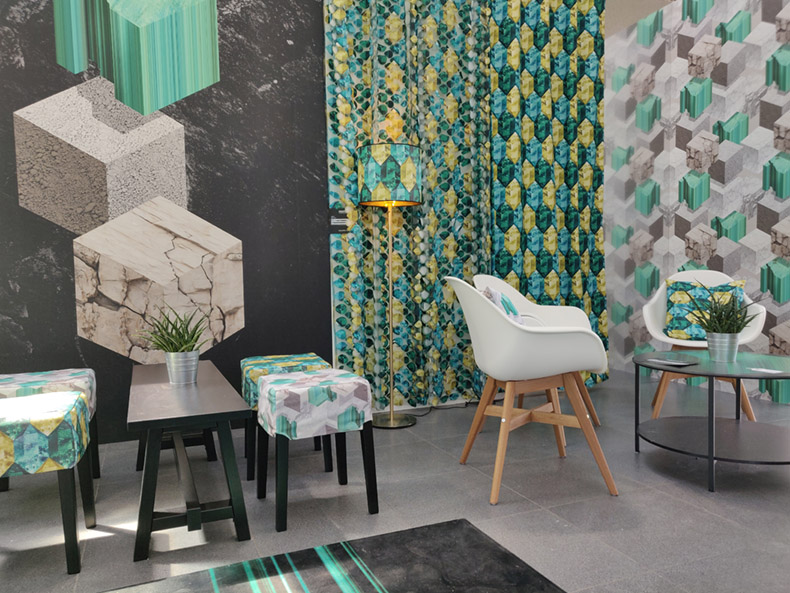Is 3D printing misunderstood?

3D printing has been reported as one of the fasted growing areas in the digital printing industry. While this is true with manufacturers, the technology has yet to become a wide-spread success for printers. What is the reason for this, and could it be that the printing community has misunderstood 3D printing?
In recent years, there have been examples of innovative 3D stands, spectacular POS applications and 3D car wraps. 3D printing technology offers many creative options. In recent years, many European printers have spent significant time and money to explore 3D printing. Examples of creative 3D print can be discovered here, FESPA listed the top 20 3D prints of 2019.
At the beginning of 2020 when COVID-19 started to emerge globally, 3D printing technology was helping to save lives. Masks and visors were being 3D printed; this technology will most likely be a saviour for printers after COVID. This provides new business opportunities for some printers.
Printers Issues with 3D Printing
 Caption: In September 2016, “Ghost Busters” buses carried the iconic ‘No-Ghost’ Logo using 3D print across the US. Each print measuring 4.30 meters in height. Photo: Massivit
Caption: In September 2016, “Ghost Busters” buses carried the iconic ‘No-Ghost’ Logo using 3D print across the US. Each print measuring 4.30 meters in height. Photo: Massivit
There are two reasons why printers experience issues with 3D printing and these are based on the current market and technical issues.
What market related reasons have attributed to 3D printing technology not being successful for printers?
- With shops, cinemas, theatres and trade shows closed in several countries, the main opportunities for 3D print applications have stopped until the pandemic improves.
- The technology industry is struggling to restore their supply chains, slowing down the development of new products.
- The latest 3D printers such as the new Mimaki 3DUJ-22, are much more affordable. Customers with a high demand for 3D prints are increasingly investing in their own printers.
- With the ongoing success of the construction industry, this has provided opportunities for outlets catering the architectural design and real estate industry with 3D prints to establish themselves. Many of these companies are not printers or repro shops but are model makers. Therefore, they have been part of the construction industry for a long time, which makes it easier to understand and serve this market. This has made it harder for printers to get their foot into that particular door.
- Lack of attractive 3D content to print. As 3D print is not popular with everyone.
 Caption: In March 2020, during the first wave of the pandemic, parts of masks and other medical equipment were 3D printed. Foto: Isinnova
Caption: In March 2020, during the first wave of the pandemic, parts of masks and other medical equipment were 3D printed. Foto: IsinnovaWhat technical and educational issues have attributed to 3D printing technology not being successful for printers?
- PSPs’ workforces are usually good with 2D data, but 3D data can prove difficult. While anyone working in pre-press can educate themselves about 3D data, it takes both time and effort. It may even require new computers, as the files can become very large.
- Most 3D print end-customers are not knowledgeable with 3D data. Similar with 2D pre-press data in the 1990s, making the files printable takes a long time, and most customers are not willing to wait.
- A 3D print is usually a finished product. It requires a lot of high-skill finishing, including deburring and lacquer/paint or colour foil wrap, before it is ready for the customer. Printers that can work in 4C don´t usually offer as reliable a colour gamut as a 2D digital print.
- The ability to print spare parts with 3D printers on a wide scale is not yet established. Even if technologies like HP´s Fusion Jet can create an output with lots of different materials, most 3D printed parts are neither suitable nor ever intended for real-world use. Because the printed spare part´s material quality is not the same as the part it is supposed to replace.
Solutions for printers looking to explore 3D printing... and beyond
 Caption: In a way, home décor is very similar to 3D printing, as it also creates a real item from digital data. Photo: S. Angerer
Caption: In a way, home décor is very similar to 3D printing, as it also creates a real item from digital data. Photo: S. Angerer
For printers with pre-existing customers or for those looking to explore a new market, 3D printing still offers new business opportunities. Once the economy has recovered from COVID-19 these opportunities will be even more numerous, as the number of 3D printer suppliers may be low.
For other printers it may be beneficial to step back and rethink what 3D printing is and what it can provide. It is the art of creating items that previously only existed as digital data. However, this is not so different from other applications such as home décor or apparel print.
While both lines of applications may require printers to change their industries, 3D printing offers end customers who are looking for more unique and sustainably goods to buy. Online shopping has become the norm for customers (profound knowledge of online marketing tools still seem very much recommended).
Most printers should have most of the equipment they need to re-focus on apparel and home décor already available. Venturing into those industries therefore should require much less of an investment than buying a 3D printer. But just as much dedication!
Topics
Interested in joining our community?
Enquire today about joining your local FESPA Association or FESPA Direct
Recent news

The power of digital design tools in screen printing
James Gatica shares how the combination of traditional screen-printing techniques with cutting-edge digital design tools is revolutionising the way designers conceptualise and produce custom decorative pieces.

Key trends and market shifts on Personalisation and Sportswear with Epson
Debbie McKeegan speaks to Duncan Ferguson, VP of Commercial and Industrial Printing at Epson Europe about the market shifts and current trends around personalisation. Duncan shares the key trend of merging both fashion and sportswear.

